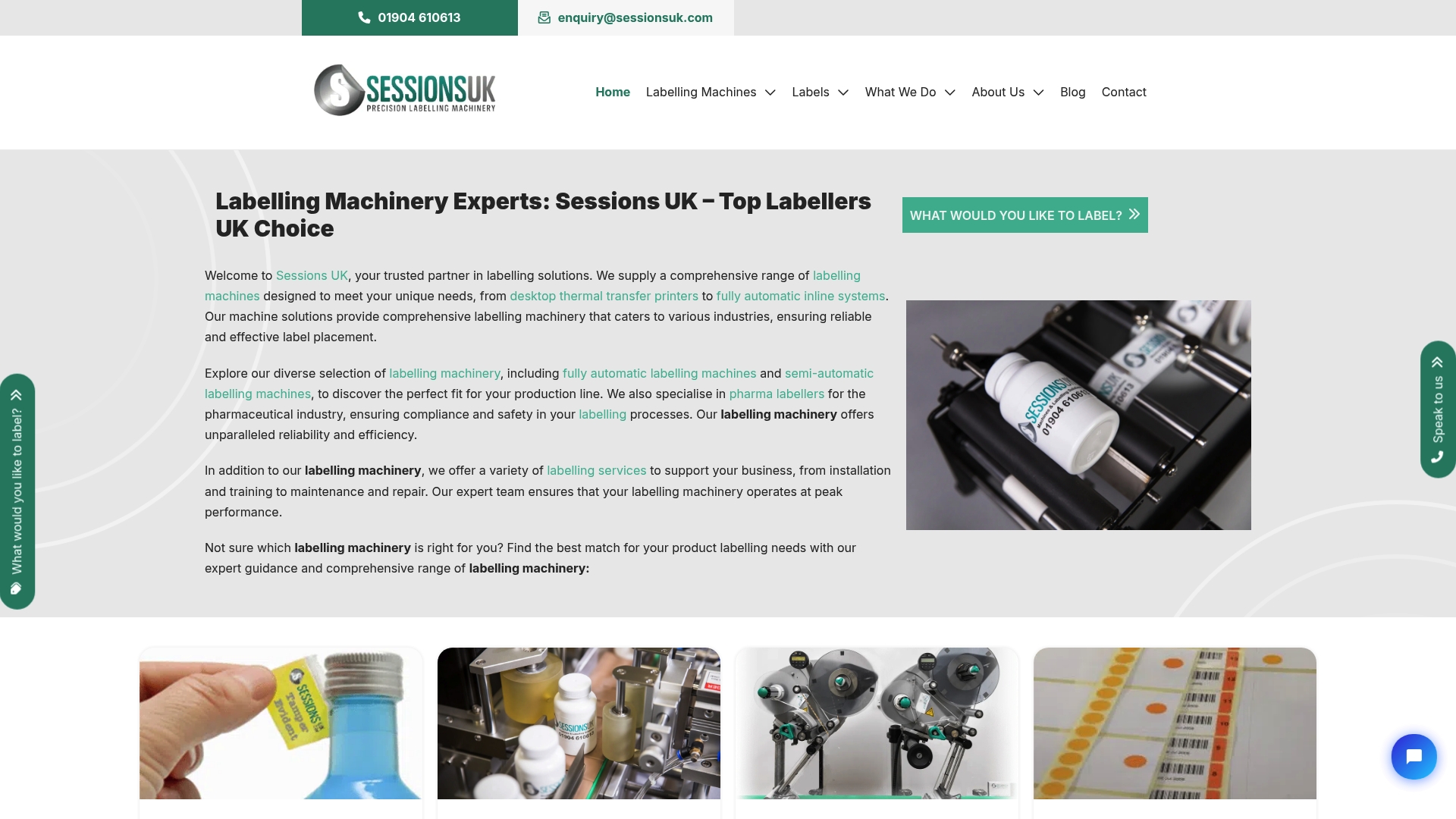
Sustainable labelling is moving at lightning pace and by 2025, new UK rules will demand a level of transparency few brands are truly ready for. Most businesses are focused on green logos and catchy designs. Yet the real test is much tougher. From 30 June 2024, all sustainability labels must meet strict qualifying criteria with annual reviews and full documentation. Here is the surprise. Getting the artwork right barely scratches the surface. The unexpected twist is this. Regulatory compliance and robust tracking systems will define who leads the market in 2025—not clever branding. Genuine environmental commitment and airtight reporting now separate top brands from the rest.
| Takeaway | Explanation |
|---|---|
| Sustainable labelling standards are evolving rapidly. | By 2025, companies must adhere to stringent regulations focused on transparency, traceability, and credibility in product labelling, necessitating robust tracking systems and transparent reporting protocols. |
| Invest in eco-friendly materials and processes. | Utilising materials such as post-consumer recycled papers and innovative production methods, like digital printing, can substantially reduce environmental impacts while maintaining product quality and compliance. |
| Navigate complex regulatory landscapes effectively. | Businesses must prepare for enhanced sustainability reporting and certification requirements across various sectors to build trust and demonstrate environmental leadership. |
| Leverage technology for operational efficiency. | Integrating smart labelling technologies, like RFID and automated systems, can optimise operational performance and reduce costs, transforming compliance challenges into strategic opportunities. |
| Embrace sustainability as a competitive advantage. | Companies that proactively adapt to sustainability requirements and showcase commitments can differentiate themselves in the market, appealing to environmentally conscious consumers. |
Sustainable labelling standards are rapidly evolving, transforming how businesses communicate environmental and ethical commitments to consumers. By 2025, regulatory frameworks will demand unprecedented transparency and accuracy in product labelling practices.

The UK is implementing stringent sustainable labelling regulations that will fundamentally reshape product communication strategies. From 30 June 2024, companies must meet specific “qualifying criteria” for sustainability labels, requiring thorough documentation and annual reviews. The comprehensive guide to UK labelling standards provides critical insights for businesses navigating these complex requirements.
According to the Financial Conduct Authority’s 2025 Handbook, sustainability labelling rules will come into force on 28 February 2025. This marks a significant shift in regulatory expectations, placing direct responsibility on firms to validate and substantiate their sustainability claims. Companies will need to conduct rigorous internal assessments to ensure their labels accurately represent environmental and ethical performance.
Effective sustainable labelling goes beyond mere visual design. It encompasses several critical elements that demonstrate genuine commitment to environmental responsibility:
The emerging UK Sustainable Reporting Standards (SRS), expected by March 2025, will align with International Sustainability Standards Board (ISSB) frameworks. These standards aim to unify existing reporting requirements, potentially introducing a comprehensive UK Green Taxonomy that sets clear benchmarks for sustainable product communication.
Businesses must recognize that sustainable labelling is no longer a marketing strategy but a critical compliance requirement. The shift demands investment in robust tracking systems, data collection mechanisms, and transparent reporting protocols. Production teams will need to collaborate closely with compliance officers to ensure every label meets increasingly sophisticated regulatory standards.
While challenges exist, this evolution presents significant opportunities. Companies that proactively adapt to these standards can differentiate themselves, build consumer trust, and demonstrate genuine environmental leadership. The key lies in understanding these emerging frameworks and implementing comprehensive, honest labelling practices that reflect true sustainability commitments.
The journey towards sustainable labelling begins with a critical evaluation of materials and production processes. As environmental consciousness grows, businesses must reimagine their approach to label design and manufacturing, focusing on materials that minimize ecological impact while maintaining product quality and compliance.
Eco-friendly label materials are revolutionizing the packaging industry. Our comprehensive guide to label materials reveals a range of sustainable alternatives that go beyond traditional approaches. According to Lotus Labels, renewable resources are becoming increasingly popular, with materials like sugarcane fibre, bamboo, and FSC-certified paper leading the way in sustainable label production.
Key sustainable material options include:

Production processes play a crucial role in creating truly sustainable labels. Label.co.uk highlights several best practices that significantly reduce environmental impact. Digital printing emerges as a key technology, dramatically reducing CO2 emissions compared to traditional printing methods.
Additionally, innovative approaches are transforming label design:
The most advanced compostable labels not only decompose quickly but also avoid releasing toxins or microplastics. This approach supports closed-loop sustainability goals, providing a complete environmental solution that goes beyond mere waste reduction.
Businesses must consider multiple factors when selecting eco-friendly label materials. Performance remains critical – sustainable labels must withstand storage conditions, transportation, and consumer handling while maintaining their integrity. This requires careful testing and selection of materials that balance environmental benefits with practical functionality.
Economic considerations cannot be overlooked. While sustainable materials may initially appear more expensive, they offer long-term benefits. Reduced environmental impact, improved brand perception, and alignment with emerging regulatory requirements provide significant strategic advantages. Companies investing in sustainable labelling are positioning themselves as forward-thinking leaders in their respective industries.
The future of labelling is green. By embracing innovative materials, advanced production processes, and a holistic approach to sustainability, businesses can create labels that not only communicate product information but also demonstrate a genuine commitment to environmental responsibility.
Navigating the complex landscape of industry regulations and certifications is crucial for businesses seeking to maintain compliance and demonstrate commitment to sustainable practices. By 2025, regulatory frameworks will become increasingly sophisticated, demanding precision and transparency in labelling across multiple sectors.
The UK is implementing stringent packaging and labelling regulations that will fundamentally transform how businesses approach product communication. From January 2025, large packaging producers will be required to assess and report the recyclability of household packaging, read more about upcoming packaging regulations. According to Inside Packaging, this marks a significant shift towards enhanced sustainability reporting and transparency.
The UK Government is actively developing a consistent, mandatory packaging labelling system as part of the Extended Producer Responsibility (EPR) framework. Clarity.eco highlights that this initiative aims to harmonise UK and EU labelling standards, ultimately promoting recycling and reducing complexity for businesses.
Different industries face unique certification challenges. In the medical device sector, for instance, UK Government guidance mandates specific labelling requirements. Devices placed on the Great Britain market must carry either UKCA or CE markings, depending on the relevant legislation. These markings ensure compliance with critical safety and traceability standards.
Key certification considerations include:
Beyond mandatory requirements, businesses are increasingly pursuing voluntary certifications that showcase their commitment to sustainability. These may include:
The complexity of these regulations demands a proactive approach. Companies must invest in robust internal systems that can track, verify, and report compliance across multiple dimensions. This involves close collaboration between production, compliance, and sustainability teams.
Technology will play a crucial role in meeting these evolving requirements. Advanced labelling systems with digital tracking capabilities, integrated compliance reporting, and real-time verification mechanisms will become essential tools for businesses navigating this complex regulatory environment.
While these regulations may seem challenging, they represent an opportunity for businesses to differentiate themselves. Companies that view compliance as more than a box-ticking exercise can leverage these standards to build trust, demonstrate environmental leadership, and create genuine value for environmentally conscious consumers.
The future of labelling is not just about meeting minimum requirements but about creating a transparent, accountable, and sustainable approach to product communication. Businesses that embrace this philosophy will be best positioned to thrive in an increasingly regulated and environmentally aware marketplace.
In the rapidly evolving landscape of sustainable labelling, businesses must strategically balance environmental responsibility with operational efficiency. Cost savings and productivity are no longer mutually exclusive goals but interconnected strategies that drive competitive advantage.
Technological advancements are transforming labelling operations, offering unprecedented opportunities for cost reduction. Learn more about optimising labelling processes, businesses can leverage smart label technologies to dramatically improve operational performance. According to Label Market, integrating technologies like RFID and QR codes enables real-time data tracking and significantly reduces manual labour costs.
Key technological interventions include:
Contrary to traditional assumptions, sustainable labelling materials can generate substantial long-term economic benefits. Label Market highlights that adopting recyclable, compostable, or renewable content materials not only meets regulatory requirements but also reduces waste management costs.
Economic advantages of sustainable materials include:
The Department for Business and Trade emphasises that proactive compliance with evolving labelling regulations helps businesses avoid costly penalties and maintain operational continuity. By developing robust, adaptable systems, companies can transform regulatory challenges into strategic opportunities.
Implementing efficient labelling processes requires a holistic approach. This means investing in training, upgrading technological infrastructure, and fostering a culture of continuous improvement. Businesses must view operational efficiency not as a one-time initiative but as an ongoing strategic commitment.
Data-driven decision-making will be crucial. Advanced analytics can help identify inefficiencies, predict maintenance needs, and optimise resource allocation. By leveraging machine learning and predictive technologies, businesses can create more responsive, agile labelling operations.
The convergence of sustainability and operational efficiency represents a significant competitive opportunity. Companies that successfully integrate these principles will not only reduce costs but also position themselves as forward-thinking leaders in their respective industries.
Ultimately, maximising cost savings and operational efficiency in labelling is about creating a symbiotic relationship between technological innovation, sustainable practices, and strategic thinking. It requires a nuanced understanding of emerging technologies, regulatory landscapes, and evolving consumer expectations.
Companies must adhere to stringent regulations focusing on transparency, traceability, and credibility in product labelling. From 30 June 2024, sustainability labels must meet strict qualifying criteria, including thorough documentation and annual reviews.
Businesses can choose sustainable materials such as post-consumer recycled papers, plant-based films, and hemp-based papers. It’s essential to evaluate performance and ensure that the materials can withstand conditions while being environmentally friendly.
Technologies such as RFID, QR codes, and automated labelling systems enhance efficiency by enabling real-time data tracking, reducing manual labour costs, and improving operational performance. This integration streamlines compliance with sustainability regulations.
Sustainability is increasingly becoming a competitive advantage. Companies that adapt to sustainability requirements and demonstrate genuine environmental commitment build trust with consumers, differentiate themselves in the market, and appeal to environmentally conscious shoppers.
If you are feeling the pressure of new compliance rules and increased demand for transparent, sustainable labelling, you are not alone. As outlined in the article, the upcoming regulations mean that outdated labelling processes could leave your brand at risk of costly mistakes or lost consumer trust. Operations and compliance teams face mounting challenges—traceability, credible documentation, and the need for airtight efficiency are all critical. The good news is that these are exactly the problems that Sessions UK’s labelling machines have been designed to solve.

Do not wait until rules go live and competition tightens. Explore our fully automatic labelling machines for seamless compliance and unbeatable speed. Or, browse our full solutions at Sessions UK and see how expert guidance and best-in-class equipment can turn tomorrow’s regulations into your strategic advantage. Future-proof your labelling—act now to protect your brand and push your operations ahead of the curve.
Copyright © 2025 Sessions Label Solutions Ltd.